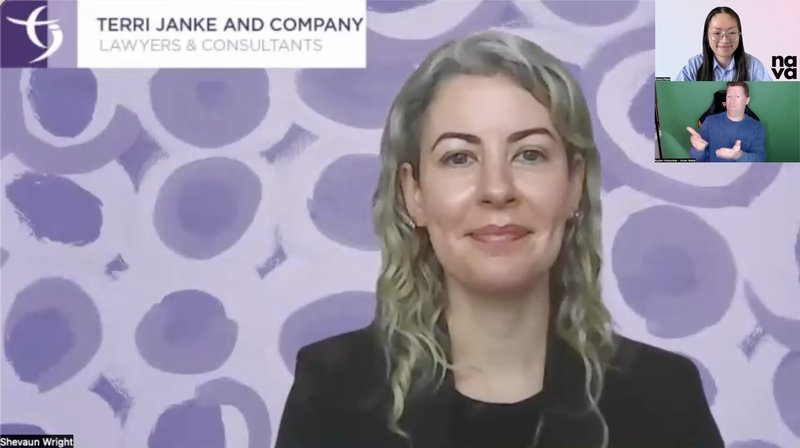NAVA Talks AI program recap
These webinars provided an overview of the critical issues at the intersection of AI and arts practice, offering valuable insights and practical advice for artists navigating this evolving landscape.
These webinars provided an overview of the critical issues at the intersection of AI and arts practice, offering valuable insights and practical advice for artists navigating this evolving landscape.

NAVA extends our heartfelt gratitude to everyone who participated in NAVA Talks AI. Over the course of three webinars, industry practitioners delved into the legal and ethical challenges at the intersection of AI and arts practice. The discussions highlighted both the potential and risks posed by AI in areas concerning Indigenous Cultural and Intellectual Property (ICIP), copyright and intellectual property (IP), and sustainable arts practice. These sessions provided invaluable perspectives on safeguarding artists’ creativity, livelihoods and rights.
Shevaun Wright, a practising artist and lawyer at Terri Janke and Company, explored the impact of AI on Indigenous Cultural Intellectual Property (ICIP) and Intellectual Property (IP), shedding light on the challenges and opportunities it presents for First Nations artists. Wright discussed critical risks such as misinformation, culturally offensive content, lack of attribution and the absence of consent from artists or communities.
These risks compound existing challenges faced by Indigenous artists, including the proliferation of fake art, reproduction of colonial mindsets, culture oversimplification, and the appropriation of Indigenous knowledge without consent or benefits. Wright’s presentation offered guidelines for good practice protocols, including informed consent, community involvement, attribution, and benefit sharing. She also highlighted current legal developments aimed at establishing standalone ICIP legislation.
Katherine Giles, Head of Legal and Operations at Arts Law, discussed copyright infringement in the context of AI. She explained how both the copyright and moral rights of artists are violated through data scraping and training, as well as in the generation of AI-created works. Giles discussed ongoing international legal cases against AI companies, regulatory developments, and advocacy efforts supporting creators and communities.
Giles also offered practical tips for artists, such as using blocking tools, conducting reverse Google searches, opting out, and requesting content removal. She posed a thought-provoking question: do we want a society where only AI-generated creative expression exists?
Kailum Graves, a multidisciplinary and conceptual media artist based in Meanjin (Brisbane), led a discussion on the ethical implications and future considerations of AI in creative practice. Graves posed several questions:
Graves examined the impact of photography on modern art, his own exploration of AI in art production, and the redefinition of creativity through AI. He also discussed whether artists should attribute AI contributions, the implications for collaboration and experimentation, and the potential homogenisation of creativity and art through AI. Graves highlighted various AI platforms, applications, and examples of generative AI, and questioned the balance of copyright protection between individuals and large companies.
Screenshot from NAVA Talks AI and ICIP webinar, Monday 13 May 2024.
[ID: screenshot of Shevaun Wright on a purple background of purple circles, in the top left of the screen is the Terri Janke and Company logo, in the top right there are two screens stacked showing Emma Pham on a plain pastel background with the NAVA logo and the Auslan interpreter on a green background.]